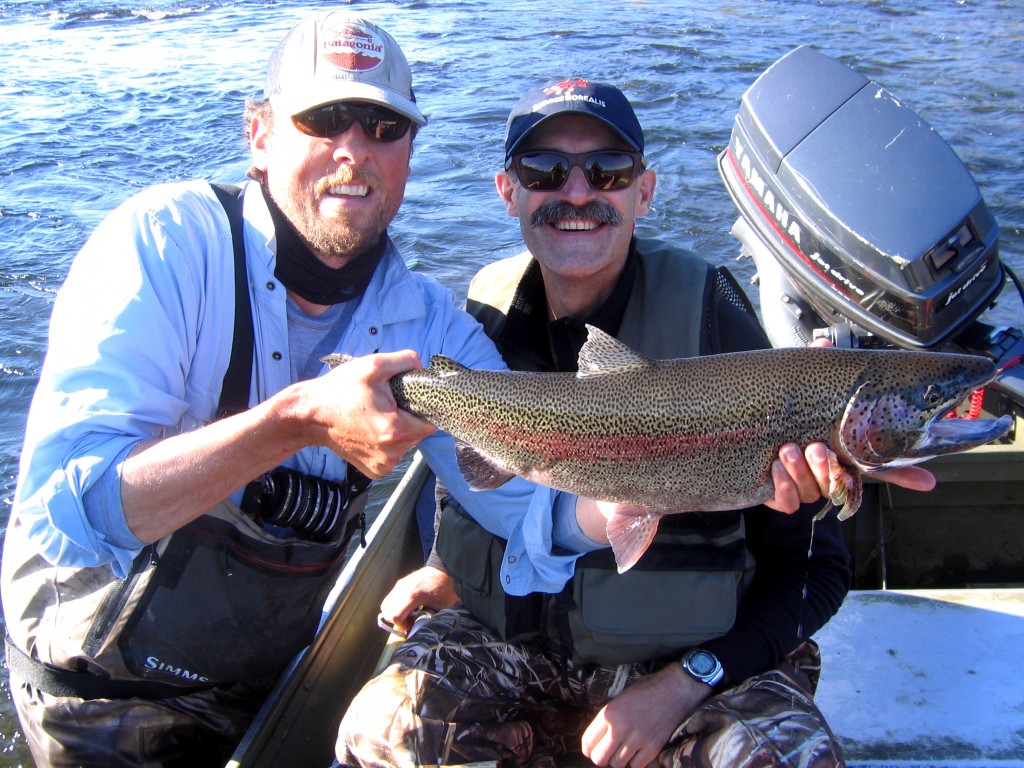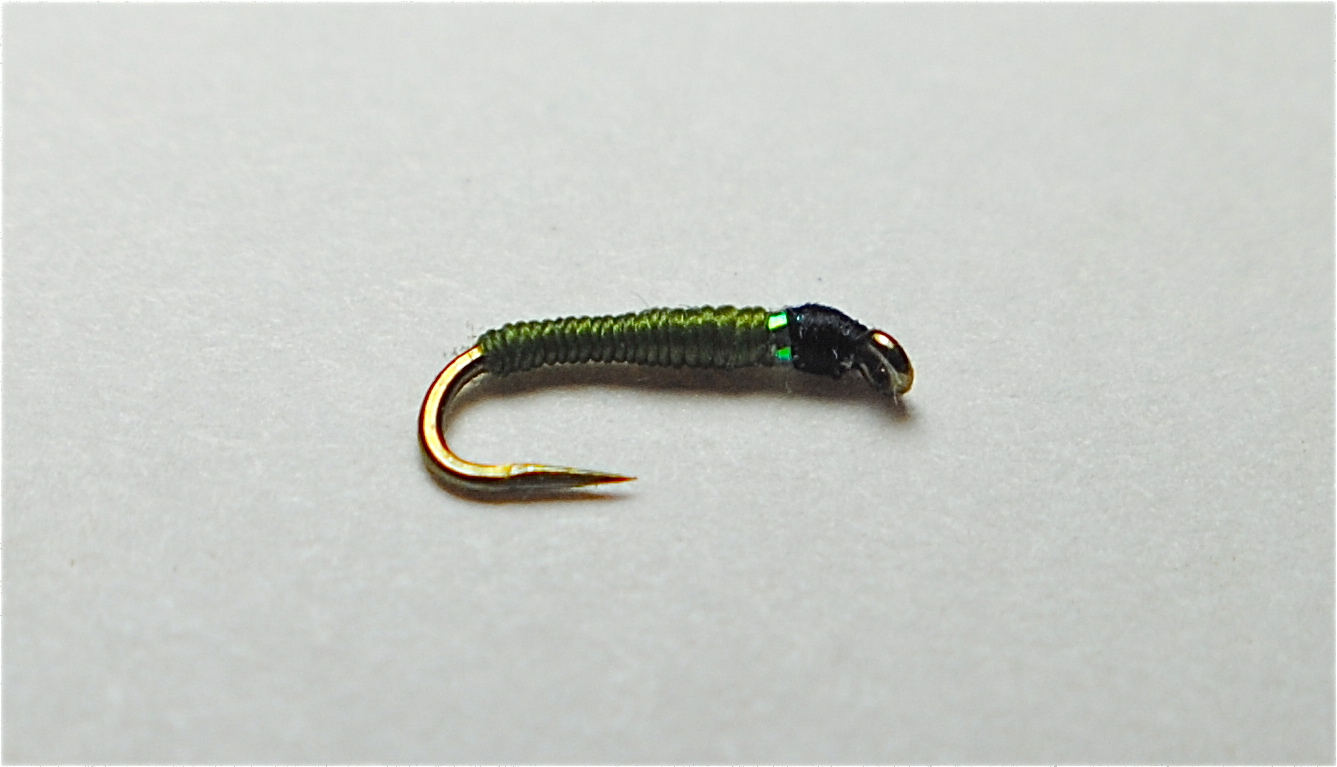Contributed by Adam Franceschini – Tikchik Narrows Lodge Pro-Guide
Every year there is a gap period between the smolt run and the bead drop when a select few Tikchik Guides known as the “PAC Rats” show off some trophy trout. Located in the heart of the Wood-Tikchik chain of lakes is the famed Agulapak River, or the ‘PAC’ as we call it. This is a two mile stretch of river that connects Lake Beverly to Lake Nerka. For a few weeks every summer, the PAC turns into a very challenging tail water. The words Midge and Light Tippet leave anglers shaking their heads in frustration. In this “how to” article, I will discuss some fly patterns and tips to help you land a fish to remember.
THE LEADER
First, I use a hand-tied ten to twelve foot fluorocarbon leader with an aggressive taper from the butt section to the tippet. Tippet has a smaller diameter than the normal tapered leader and as a result, the flies will sink faster and will be in the strike zone longer during your drift. Next, when midge fishing you have to eliminate all drag. The longer leader will allow you to keep your fly line on the reel, which results in less surface drag. Finally, Fluorocarbon is less visible and denser then Monofilament, which is key on the PAC where the fish get a lot of angling pressure.
THE RIGGING
When Nymph fishing, you want the flies to tumble and bounce along the bottom freely. One common oversight I find with a lot of anglers is that they fish with the same indicator depth all day. Because the PAC has both deep buckets and shallow shelves, you need to constantly change the depth of your indicator according to the depth of the water. If you set your depth too long, you will miss strikes due to the slack in your system. On the other hand, if you set your indicator depth too short, you won’t be in the strike zone. A good rule of thumb is you want your indicator to just slightly bounce as it drifts downstream.
There are many different ways to rig your tandem flies but I find that a distance of 15 inches between the split shot and the fly works best. I tie a piece of 5x tippet section with a double surgeon’s knot at the end of the leader to stop the split shot from sliding down the tippet. Attach your first fly, or point fly to the end of your tippet off the bend of the first hook. Then add a second piece of tippet usually 5 or 6x depending on your fly size and attach your second fly, or a dropper fly remembering the 15 inch rule to the end. Typically the leader break down is this: one foot of 15LB, one feet of 12LB, one foot of 10LB, two feet 8LB, and five feet 5LB line.
Now with the spilt shot bouncing on the stream bed, you are able to cover the first 30 inches of the water column with your flies.
THE FIGHT
To allow these tiny flies to drift drag free you will need to use 5 or 6x tippet. Again I use fluorocarbon. On most streams this would be the ‘go to’ sizes of tippet, but when you are targeting 24 plus inch fish this puts you at a huge disadvantage. First set the drag loose, once you hook a fish they will bolt off with runs going into the backing. If you tighten the drag, the fish will easily snap your line. DON’T EVER palm the reel. You have to go after these fish if you want a shot at landing them. Sometimes the fight lasts more the ten minutes. But when you have the Trophy pin at dinner time, it’s all worth it.
THE FLIES
THE DARK KNIGHT
This is my go to fly for the lower buckets. I have hooked and landed fish up to twenty six inches in length on this midge pupa pattern. With midges having black heads, you can use either a glass or metal bead. The fly is very easy to tie and has great durability. I almost always use the fly as a dropper or last fly.
HOOK: Tiemco 2488SPBL size 24-26
Bead: Matte Black or Black Glass
Thread: Black UTC 70
Rib: small blue wire counter wound
Body: Black UTC 70
Thorax: Black UV Ice Dub
THE REVEREND
This is my favorite fly for the upper flats, where the water is gin clear and moving slower, giving the fish a good look at what they are eating. When we spot and start to sight fish to a big rainbow this is the fly I put on. I will use this pattern as a point fly but find it works best in the second position.
HOOK: Tiemco 100SPBL size 20-24
Body: Olive UTC 70
COLAR: Grey Ghost krystal flash
HEAD: Black UTC 70
Photo Credits: Jennifer Shupert



